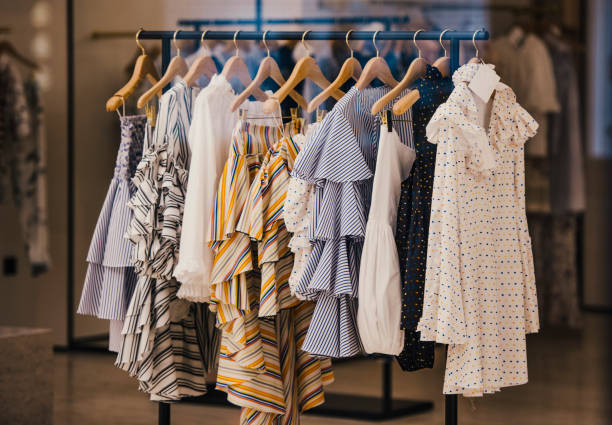The Effect of Social Media on Today's Boutique Fashion Trends
The Effect of Social Media on Today's Boutique Fashion Trends
Blog Article
A Deep Study the World of High-Fashion Runways: Understanding Apparel as Art
Developers, a lot like masterful musicians, weave intricate narratives through form, fabric, and color, redefining and challenging conventional norms beauty standards. As we check out these sartorial spectacles, we must consider: what duty does style play in forming social worths, and exactly how does it show the ever-changing tapestry of human emotion and identification?
The Development of Runway Reveals
The trajectory of runway programs has changed dramatically over the decades, evolving from exclusive industry occasions to exciting eyeglasses that mix fashion with art. Generally, path shows were intimate affairs, held in ateliers or little locations, largely attended by buyers and market insiders. These early presentations concentrated on the garments' workmanship and business practicality, providing a direct and practical screen of seasonal collections.
As the fashion sector increased, the nature of path programs started to alter. The 1970s and 1980s noted a turning factor, with designers looking for to differentiate themselves through even more staged discussions.
Over the last few years, technology and social media have additionally changed runway shows, making them obtainable to a worldwide audience. Livestreaming and digital platforms have actually democratized fashion, enabling enthusiasts worldwide to witness these occasions in real-time (boutique fashion). This evolution mirrors a wider social change, where high-fashion paths serve as a dynamic crossway of design, efficiency, and innovation
Designers as Visionary Artists
Designers in the high-fashion sector have actually blurred the lines in between functional garment creation and the conceptual world of art. By accepting imaginative self-controls such as sculpture, painting, and progressive installations, designers craft garments that challenge typical fashion standards and boost them to art forms.
Visionary developers draw motivation from a myriad of resources, including abstract art, historic recommendations, and individual stories. They possess an one-of-a-kind ability to picture and materialize concepts that press the boundaries of conventional fashion, often redefining aesthetic standards in the procedure. This imaginative ingenuity is showcased through remarkable shapes, ingenious products, and detailed craftsmanship, which invite viewers to experience fashion as greater than just wearable products.
Additionally, the path acts as a canvas for these musicians, where illumination, songs, and established style coalesce to produce immersive experiences. These discussions are not merely displays of clothing yet are orchestrated performances that evoke emotion and provoke thought, verifying the designer's role as a real musician in the modern social landscape.
Cultural Influences in Fashion
Social tapestry weaves its elaborate patterns right into the fabric of fashion, affecting developers around the world. The dynamic interchange of social stories, traditions, and symbols educates and motivates collections that elegance high-fashion paths.
The impact of society on fashion is often seen in important site the reinterpretation of traditional garments and patterns. The use of Japanese robes, Indian saris, or African prints in modern fashion mirrors a mix of social authenticity and contemporary appearances. Developers such as Valentino's Pierpaolo Piccioli and Alexander McQueen's Sarah Burton have actually been recognized to incorporate abundant cultural concepts into their couture collections, translating background right into wearable art.

Technology in Textile and Design
Advancement in fabric and design regularly improves the landscape of high-fashion, pushing limits and redefining opportunities. Recently, technological innovations have actually considerably contributed to this advancement, introducing materials that challenge traditional understandings. Textiles embedded with clever fibers, with the ability of changing color or controling temperature level, are no longer restricted to the realm of sci-fi. Designers are significantly discovering the assimilation of technology, such as 3D printing, which permits the production of complicated structures that were previously unimaginable.
The style sector is experiencing a rise in the use of environmentally friendly products, derived from recycled plastics, natural fibers, and even biodegradable elements. Designers are embracing these materials to craft garments that are both aware and aesthetically striking of their eco-friendly footprint.
In regards to style, avant-garde silhouettes and experimental kinds are continuously changing the path. By incorporating non-traditional products and innovative methods, developers grow garments that blur the line between style and art, establishing brand-new requirements for creative thinking and expression in the high-fashion sphere.
Influence of Fashion on Culture
Style wields a profound influence on culture, working as both a representation of cultural identity and a catalyst for social modification. Via its evolution, fashion has actually mirrored social changes, encapsulating the zeitgeist of various eras. For circumstances, the flapper outfits of the 1920s embodied a newly found feeling of females's freedom, while the strong prints of the 1960s resembled the cutting edge spirit of the time. High-fashion paths, particularly, act as systems for difficult page norms and redefining elegance standards. Designers make use of these venues to resolve pushing social problems, from sustainability to variety, thus shaping public discourse.
Additionally, style has the power to bridge cultural voids, cultivating understanding and recognition amongst varied groups. As globalisation increases, the cross-cultural exchange of style ideas ends up being progressively considerable, promoting inclusivity and diversity. The increase of streetwear, originating from urban subcultures, highlights how fashion can transcend socio-economic borders, approving people a method of self-expression and empowerment.
Essentially, fashion is not just concerning looks; it is a dynamic pressure that influences worths, perspectives, and societal progress (boutique fashion). By constantly connecting with cultural and social currents, fashion stays an integral component of the cumulative human experience

Conclusion
Designers, akin to visionary artists, orchestrate collections that mirror identity, feeling, and social narratives, challenging conventional appearances. This intersection of fashion and creativity not just captivates target markets around the world yet additionally influences societal perceptions and promotes a much deeper appreciation for social diversity.

Cultural tapestry weaves its detailed patterns into the textile of fashion, affecting designers worldwide.Style wields a profound influence on society, offering as both a representation of cultural identification and a stimulant for social adjustment.
Report this page